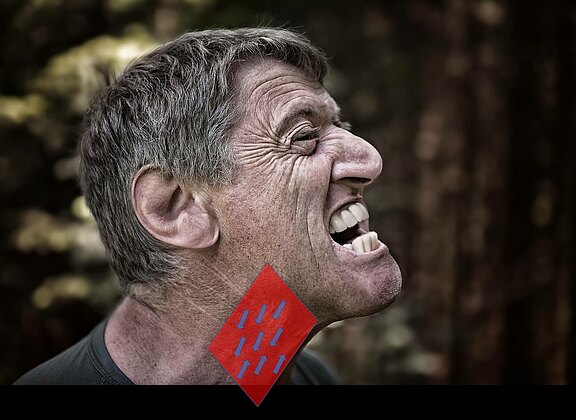The neck region can also be affected by a reduced function of the facial nerve. The lower facial nerve branch, called the ramus cervicalis, which is furthest from the trunk, is responsible for the control of the superficial cervical muscle. The superficial cervical muscle lies directly under the skin and usually becomes visible when it contracts.
This 67-year-old female patient shows incomplete facial paralysis on the right. Originally Bell's palsy was present. The facial paralysis shows synkinetic movements in the eye complex as well as a spastic component of the cervical muscle: in the area on the right side of the neck a tense muscle belly is clearly visible under the skin. This over-regulated contraction of muscle groups is part of a spastic form of facial paralysis and can be so severe that the cervical muscle counteracts the lifting of the corner of the mouth required for a smile as an antagonist. The corner of the mouth is thus fixed by the strong pull of the superficial neck muscle. Affected patients often report a one-sided, constant tension of the neck muscles and a "fixed corner of the mouth". If there is an overregulated spasticity of the cervical muscles, the injection of finely dosed botulinum toxin can provoke a temporary reduction in function (4-6 months) of the cervical muscle. Not infrequently, the corner of the mouth also gains mobility and is easier to control in incomplete paresis. The patient gains a dynamic where it is most important: in the mouth and cheek area. A permanent deactivation of the neck muscle can be achieved by surgical measures at the patient's request. Either the nerve branch overexciting the superficial cervical muscle can be located and eliminated (neurectomy) or part of the cervical muscle can be removed (myotomy/myectomy).

